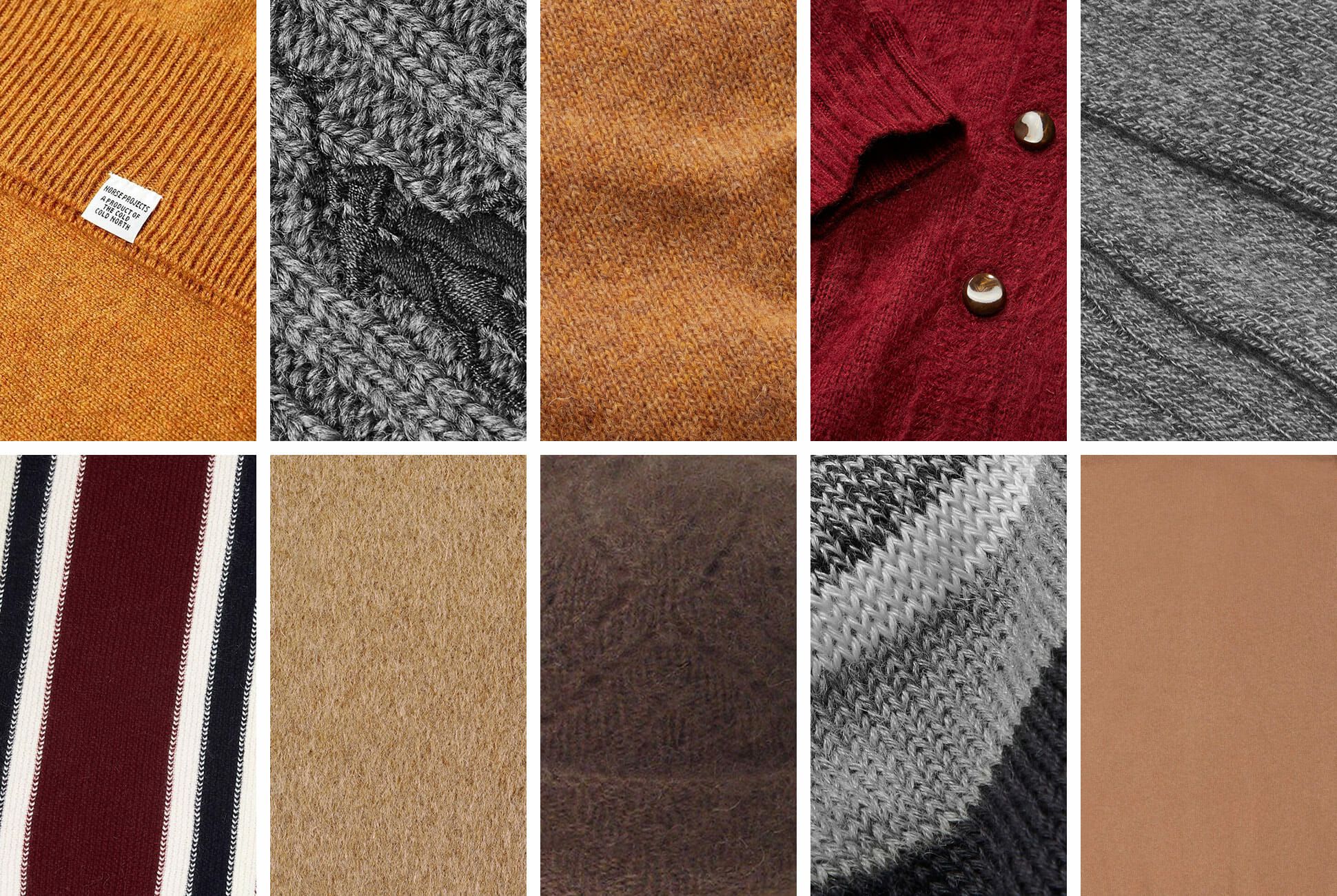The 10 Types of Wool You Need to Know Before Fall

Wool has a long list of benefits that makes it ideal for your go-to winter sweater. Its fibers are naturally crimped, so tiny air pockets are created when the fibers are stacked together. This is what makes wool fabrics warm, breathable and naturally elastic. Additionally, wool fabrics have a high regain.
This means that the fiber’s natural structure is able to absorb a large amount of moisture (up to 35 percent) before feeling damp. This moisture-retaining ability also means wool fabrics are odor-resistant and static-resistant. Counterintuitively, while wool naturally retains moisture, many wools also possess a natural layer of lanolin which makes them somewhat water-repellent and stain-resistant.
Humans have been wearing wool as far back as 6000 BC, but breeding animals for their wool for even longer. And though wool offers many benefits, not every type is the same. The versatile fiber comes from a variety of animals, each of which imparts a unique set of characteristics. So, it’s unsurprising that there are more than a few options. Though there are dozens of varieties of wools, these are the 10 you should know.
1. Lambswool
Lambswool comes from the first shearing of a young sheep (lamb) which is shorn around seven months. It’s sometimes referred to as virgin wool, though that term also refers to wool that hasn’t yet been processed. The shearing of the lamb at this stage yields extremely smooth, soft and fine wool which also has hypoallergenic properties.
2. Merino Wool
Merino wool comes from the merino breed of sheep which have their origins in Spain, though much of today’s merino wool is exported from Australia. Merino wool is known for its fine fibers which offer a supremely soft hand and make it a great material for garments like base layers that have direct contact with the wearer’s skin.
Merino wool also has a lower yield compared to other wools because of the scouring process which is required in order to remove the fatty greases inherent to the material. Scouring washes the wool in chemicals to remove the natural lanolin layer, but the process yields only about half of the initial wool. This laborious process makes merino wool pricier than other wools. Uniqlo makes a marvelous merino wool sweater — and it’s super-cheap.
Source: www.gearpatrol.com






